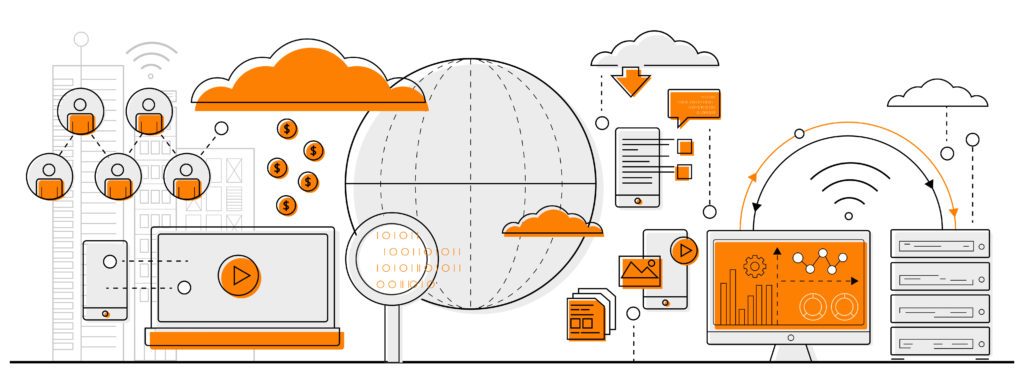
Last year, the National Retail Federation (NRF) reported that for each company closing a store, 2.7 companies were opening stores. Motley Fool reports that fast casual restaurants make up 7.7% of all restaurant sales, and that number is growing.
The growth of both of these industries is not a guarantee of success for every individual company. However, to grow at the same rate of these industries, companies need to implement the technologies that are allowing retail and fast casual to expand in the first place.
We discussed earlier this year what types of technologies are becoming more relevant in retail and food service. Let’s look at how these technologies are being repurposed and used in broader applications.
New Omnichannel
Omnichannel has never been the mere combination of channels, it’s more of a method of creating consistent branding and helping customers move down the funnel. It’s about momentum, incentivizing customers to move between channels, and measuring conversions through their engagement with your touchpoints.
A prime example is our click-and-collect kiosk idea: a customer visits your e-commerce store, places a click-and-collect order, and receives an alert on their phone to go to the store once it arrives, and then checks out via the kiosk at the front as part of your BOPIS program.
A new strategy for omnichannel has had the opposite strategy. That is, instead of directing customers between touchpoints, customers direct themselves between your touchpoints, making it a more customer-directed customer journey. In this framework, a customer has an apparently limitless number of channels – hence, “omni-channel” – to choose from, and they make the choices in how to interact with your brand.
This is more tedious and requires a greater commitment to expanding your channels, but provides a different benefit for consumers: convenience, and a brand experience centered on customer choice. Simply look at some of the experimental Alibaba stores in China: integration with the popular mobile app WeChat, IoT capabilities with their own mobile app, in-store virtual assistants at kiosks and robots, dynamic displays, and mobile checkout are among the many channels that give customers freedom to choose the channels they use.
Multiuse Beacon Technology
In-store analytics provide actionable insights into consumer behavior, and the primary way to gather that data in the past was by using beacons. Beacon technology is a valuable asset in any big data framework, and when integrated with a mobile app, can offer personalized insights on your customers.
The new applications for beacons are much broader in scope than before. Beacons are seeing more use as touchpoints themselves, as points throughout the store for a virtual assistant app to direct traffic. They do not just gather data, but they also interact with products on a more granular level – with features such as augmented reality allowing for real-time visualization using the same beacons used for data collection.
Predictive Analytics Within the IoT
The Internet of Things is the primary method of engaging customers on-site, which has allowed for the sharing of data as well as driving conversions. Gathering data and increasing sales have been the two main reasons for introducing IoT touchpoints, like mobile-friendly kiosks, in the first place.
When a company can track past purchases, shopping patterns, most visited locations, and a variety of other data points, they can start to predict when a customer will actually step through the doors. That means companies can then deliver targeted marketing campaigns and make their business more efficient in its scheduling and people counting. They accomplish this just by using data already being collected by its IoT touchpoints.
An example might be a fast-casual restaurant that uses predictive analytics in collaboration with Weather.com to leverage weather forecasts and sales in geofenced areas, centered around zip codes.
This partnership could manifest as such: when it’s warm with high winds and no rain, people are more likely to purchase indulgent foods. When temperatures top 80 and wind is low, you are more likely to sell health-conscious foods. In response to either case, your fast casual restaurant can create displays and deliver ads specific to these products when the weather hits to increase sales. Wal-Mart has done something similar in the grocery space.
Tech Innovation and Innovative Applications
Remember that innovation doesn’t just happen from the side of emerging technologies. In fact, in the examples we’ve reviewed, all of them merely expand on the existing capabilities of technology in retail or food service settings.
If you want to find out how you can leverage your existing IT framework to build a more engaging retail or restaurant environment, you can contact Worldlink today to discuss your plans for 2019 by simply filling out the contact form to the right, or book an appointment.